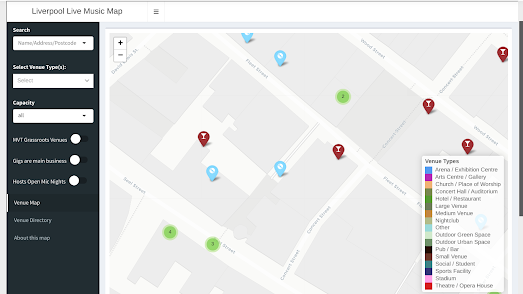Сообщения
Сообщения за декабрь, 2023
Real-Time 3D Mapping
- Получить ссылку
- X
- Электронная почта
- Другие приложения
GeoTimeGuessr
- Получить ссылку
- X
- Электронная почта
- Другие приложения
Subway Specs - Part III
- Получить ссылку
- X
- Электронная почта
- Другие приложения
Santa Tracker Maps
- Получить ссылку
- X
- Электронная почта
- Другие приложения
Where Might I Live?
- Получить ссылку
- X
- Электронная почта
- Другие приложения
Destroying People's Homes in Gaza
- Получить ссылку
- X
- Электронная почта
- Другие приложения
The Battle of Hong Kong
- Получить ссылку
- X
- Электронная почта
- Другие приложения
Mapping the Alien Invasion
- Получить ссылку
- X
- Электронная почта
- Другие приложения
Coin Hoards from the Roman Empire
- Получить ссылку
- X
- Электронная почта
- Другие приложения
The Global Birdspotting Map
- Получить ссылку
- X
- Электронная почта
- Другие приложения
How Well Do You Know New York's Subway?
- Получить ссылку
- X
- Электронная почта
- Другие приложения
The Mapped History of the London Tube
- Получить ссылку
- X
- Электронная почта
- Другие приложения
The Historical Movie Map
- Получить ссылку
- X
- Электронная почта
- Другие приложения
Racial Profiling in Redlining Maps
- Получить ссылку
- X
- Электронная почта
- Другие приложения
Night Train to Europe
- Получить ссылку
- X
- Электронная почта
- Другие приложения
The Carbon Bomb Map
- Получить ссылку
- X
- Электронная почта
- Другие приложения
Discover Your Neighborhood Tree Score
- Получить ссылку
- X
- Электронная почта
- Другие приложения
Making Animated Map GIFs
- Получить ссылку
- X
- Электронная почта
- Другие приложения
Is Light Pollution Getting Better?
- Получить ссылку
- X
- Электронная почта
- Другие приложения
The Origin of Country Names
- Получить ссылку
- X
- Электронная почта
- Другие приложения
Historical Sanborn Maps of America
- Получить ссылку
- X
- Электронная почта
- Другие приложения
Global Heating
- Получить ссылку
- X
- Электронная почта
- Другие приложения
Sea Level Rise Maps
- Получить ссылку
- X
- Электронная почта
- Другие приложения
The Live Music Mapping Project
- Получить ссылку
- X
- Электронная почта
- Другие приложения

















.gif)





